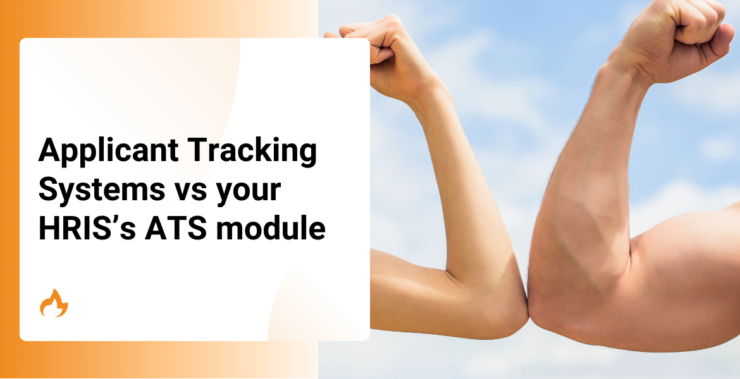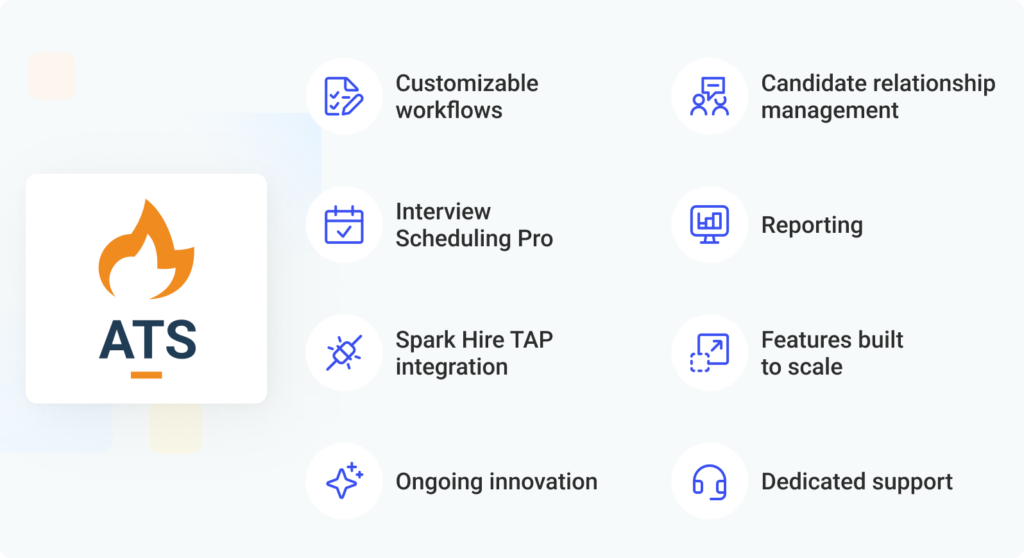While a human resources information system (HRIS) powers the core of an organization’s HR department and people operations function, it’s not built for hiring and recruiting. Read on to explore the differences between an ATS and HRIS, and why a dedicated applicant tracking system (ATS) will enable you to perform recruiting tasks more effectively than an HRIS with a recruiting module.
What is an ATS?
An ATS (Applicant Tracking System) is a software used by talent acquisition teams and those responsible for hiring at organizations of all sizes. An ATS helps you manage the end-to-end recruitment process from sourcing all the way through to the offer stage, and helps automate and simplify your organization’s recruiting and staffing operations.
With an ATS, busy recruiting and hiring teams can organize and manage candidate information and open positions. Beyond managing candidates and requisitions, applicant tracking systems offer numerous features that aim to accelerate the hiring process.
Some features you can expect in an ATS include applicant screening and interviewing tools that help busy teams sort through high applicant volumes while surfacing the most qualified candidates. Many applicant tracking systems offer customizable workflows so that the system can be easily tailored to suit an organization’s particular hiring process. Additionally, top ATSs have robust communication tools and reporting capabilities so that recruiters can centralize all of their activity into one platform.
All of this powerful functionality and resulting automation not only saves time for the recruiter, but it also enhances the candidate experience, proactively providing the candidate with more information about what to expect during the hiring process.
What is an HRIS?
While an HRIS (Human Resources Information System) is another piece of essential HR technology, the fundamental purpose is very different from that of an applicant tracking system. HRIS systems are used to track information for current employees, rather than prospective ones. Because the HRIS system often needs to support the entire HR function, functionality often includes employee record-keeping, payroll processing, benefits administration, time tracking, compliance tracking, and more. HRIS systems often offer numerous modules, but their core function is to manage employee data long-term.
Where do they fit into the HR workflow?
When considering the use cases for an ATS and the use cases for an HRIS, most organizations find that they have a strong need for both platforms. An ATS is a key component of hiring and recruiting, and used mainly by talent acquisition teams, recruiters, and hiring managers. An HRIS is used mainly by the HR department, but most employees will need to access the platform occasionally to download documentation or manage requests (like time off). Because an ATS manages the candidate lifecycle and an HRIS manages the employee lifecycle, the systems are built to serve different purposes and need to interact only when a candidate is making the transition from candidate to employee.
Why you need a dedicated applicant tracking system vs. an HRIS add-on
As we consider the depth of functionality offered by both applicant tracking systems and HRIS systems, it’s important to note that each system is tailored to different end-users and that tradeoffs inevitably occur when prioritizing an all-in-one system. Recruiting modules that are added on to an HRIS solution often lack advanced and automated functionality that is common in an ATS, including advanced candidate sourcing, search, and management, interview scheduling, assessments, and robust reporting.
How Spark Hire’s ATS stands out from the HRIS add-ons
How Spark Hire’s ATS integrates with HRIS platforms
One of the key benefits of integrating Spark Hire’s ATS with HRIS platforms is the ability to seamlessly transfer data from Spark Hire gathered during recruiting into the HRIS for onboarding. This means that when a candidate is hired through Spark Hire, their information is automatically synced with the HRIS, eliminating the need for manual data entry. This not only saves time but also ensures accuracy and reduces the risk of errors.
Boost your hiring capabilities with Spark Hire’s ATS
If you’re still relying on a lightweight ATS module in your HRIS, or if you do not yet have any applicant tracking software, contact Spark Hire to learn more about how our ATS can help you scale your hiring abilities and deliver powerful insights into your process. Not only will recruiters feel more empowered to source and organize top talent, but hiring managers will become more engaged in completing tasks and providing feedback throughout the hiring process.
Our intuitive, customizable workflow is flexible enough to meet your ever-changing needs, and our ATS is powerful enough to help you grow your organization more efficiently than ever before. Learn more.













